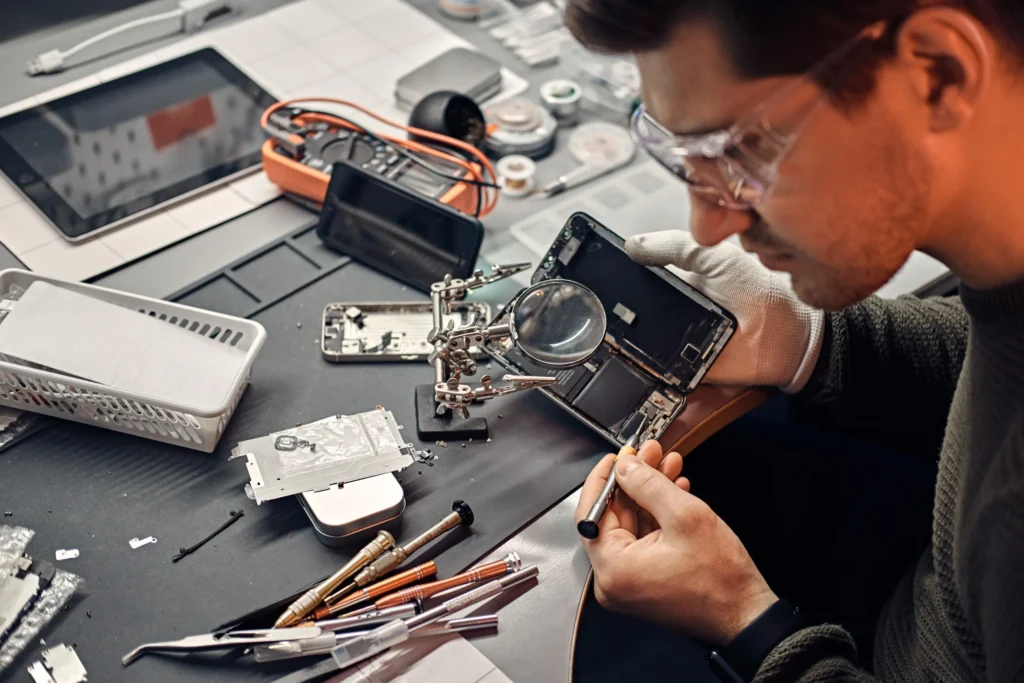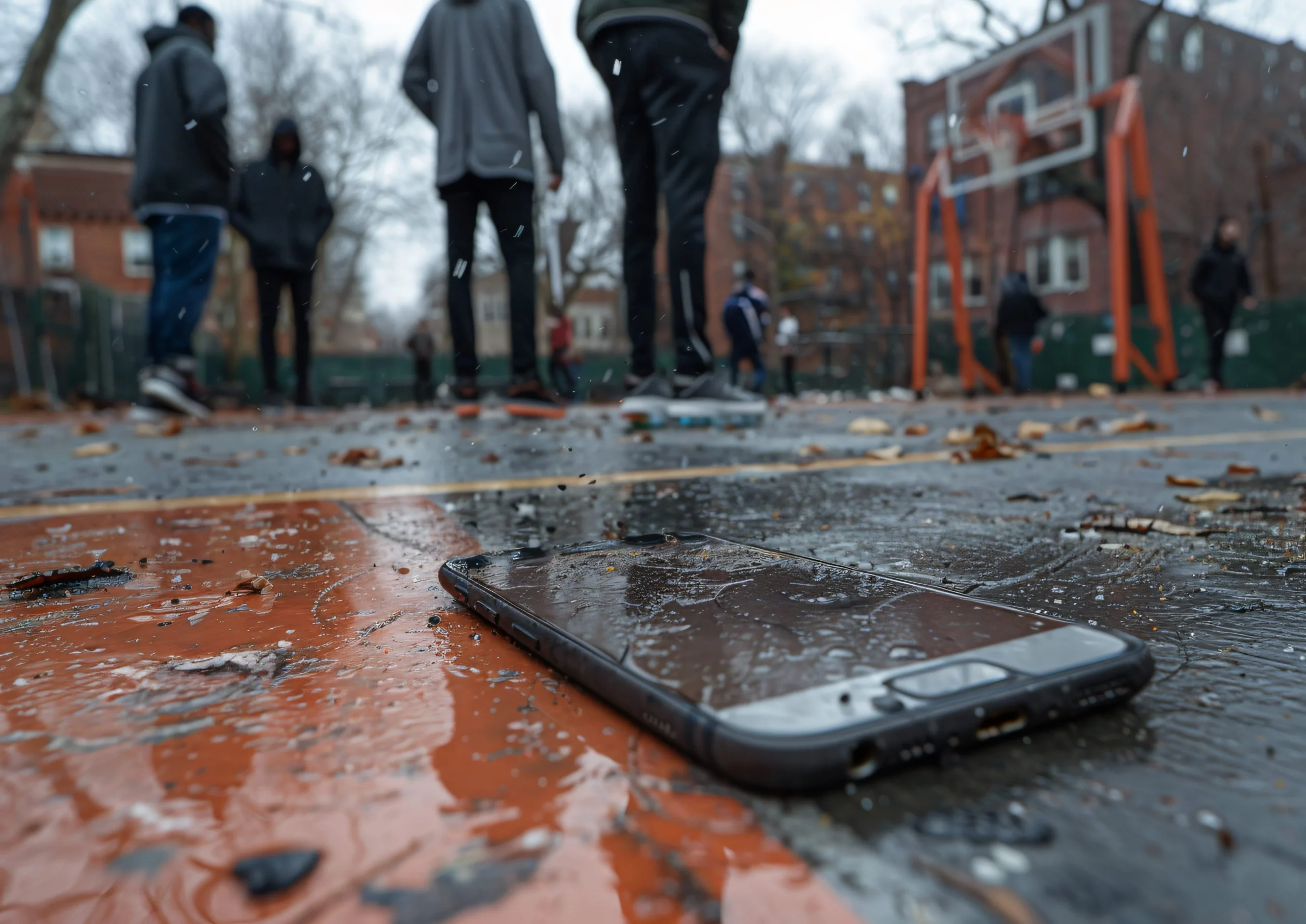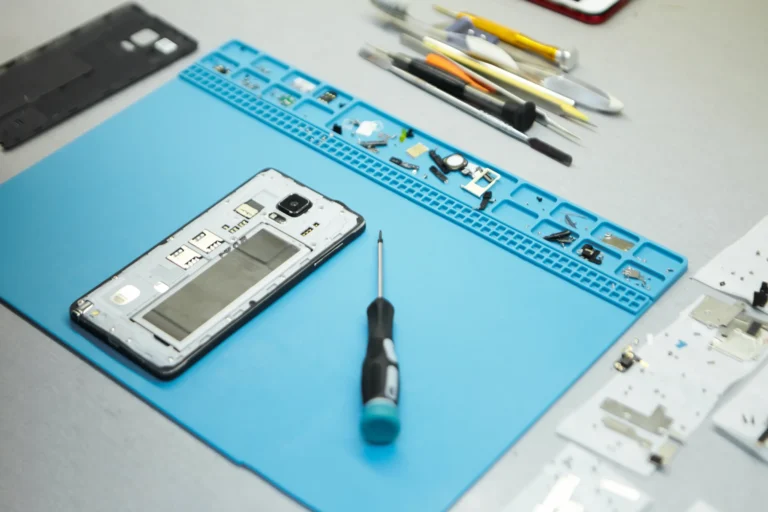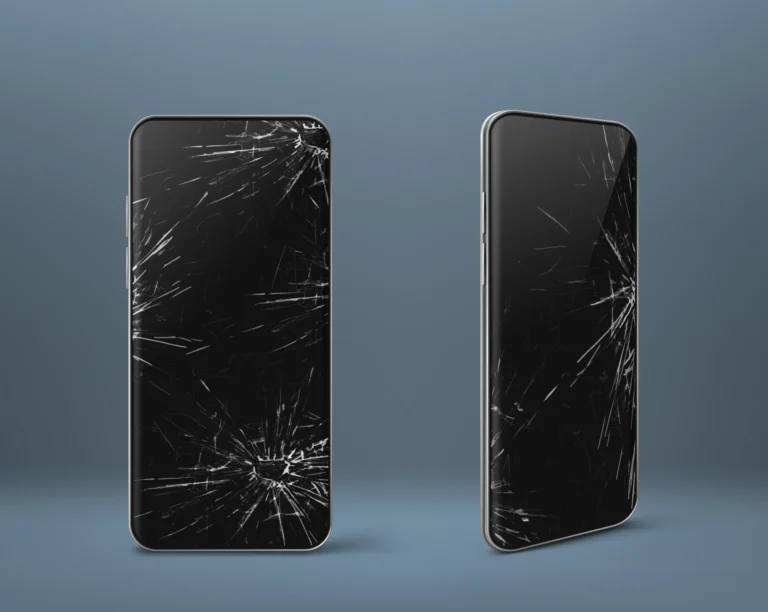Modern life revolves around smartphones maps, photos, contacts, banking, entertainment. But one slip, one splash, and your device is soaked. If you’re searching for “how to repair water damaged phone”, fix wet phone, or emergency steps for wet phone, this article walks you through everything you need to know — what to do immediately, what to avoid, and when professional repair is your best bet.
Why Water Damage Is So Serious
Water is a conductor. Once moisture gets past seals or ports (charging port, SIM tray, speaker grills), it can cause:
- Short circuits – when water bridges connections that shouldn’t be connected.
- Corrosion – even after water evaporates, residual minerals can oxidize metal components.
- Component failure – screens, sensors, microphones, battery connectors can get permanently damaged.
Even phones with water-resistance ratings (IP67, IP68 etc.) aren’t immune, especially if seals are worn, or if the water is salty/chlorinated. So knowing how to dry a wet phone properly and take phone water damage repair tips seriously can make the difference between recovery and a bricked device. Recent advice from Apple explicitly discourages using rice, which many people trust.
Immediate / Emergency Steps for Wet Phone
When your phone gets dropped in water, or otherwise exposed, the faster you act, the better the chances of salvaging it. These are the emergency steps for wet phone:
Common Myths & What to Avoid
While there are many tips floating around, some are worse than useless. Knowing what not to do is just as important as what to do.
- Don’t use rice as your go-to fix for water damage. Although many people swear by rice, recent expert advice (including from Apple) warns against it. Rice particles can get lodged in ports; rice is far less effective than proper desiccants.
- Avoid using heat and compressed air (hair dryers, ovens, hot air guns). They can warp delicate components, melt adhesives, or force moisture deeper.
- Don’t try to charge or power on too soon. If the phone is still wet inside, powering it on may cause short-circuits.
- Don’t use harsh objects to poke inside ports. Cotton swabs, toothpicks or other rigid objects can push debris further inside or damage connectors.
How to Repair Water Damaged Phone
After you’ve done the emergency steps, there are more advanced repair techniques to try. Some you can do yourself; others require professional tools or skills.
A. Do-It-Yourself (DIY) Approaches
These are methods you can try at home if you’re comfortable with basic electronics and are cautious.
- Disassemble if possible
- Remove battery, SIM, micro-SD, case, perhaps the back panel (if non-sealed).
- Helps expose internal parts so moisture has somewhere to evaporate.
- Remove battery, SIM, micro-SD, case, perhaps the back panel (if non-sealed).
- Use isopropyl alcohol (90-95% purity) for cleaning
- If there is visible corrosion, gently clean affected circuits/contacts with a brush dipped in isopropyl alcohol. It displaces water and evaporates quickly.
- Be very cautious: some parts (like coated boards, certain sensors) may be damaged by alcohol, and adhesives can be weakened.
- If there is visible corrosion, gently clean affected circuits/contacts with a brush dipped in isopropyl alcohol. It displaces water and evaporates quickly.
- Place in desiccant chambers / bags
- Use silica gel packs or commercial desiccants.
- Put the phone and packs in an airtight container; desiccants absorb moisture from the air around the phone.
- Use silica gel packs or commercial desiccants.
- Dry with airflow (not heat)
- Use a fan or leave device in a room with good ventilation.
- Keep phone elevated, with openings facing downwards so gravity helps.
- Use a fan or leave device in a room with good ventilation.
- Inspect after drying
- After 24-48 hours, reinsert battery (if removed), SIM, etc.
- Try to power it on. If it doesn’t respond, leave longer or seek repair.
- Watch for signs of long-term damage: distorted display, malfunctioning speakers, battery swelling, corrosion.
- After 24-48 hours, reinsert battery (if removed), SIM, etc.

B. Professional Repair & When To Use It
Sometimes DIY isn’t enough, and water damage requires professional intervention. Signs that you should take it to a repair specialist include:
- Device won’t turn on after drying.
- LCD/screen failure (black screen, lines, no display though you hear sounds).
- Battery issues: swelling, fast drains, inability to charge.
- Corrosion visibly attacking board components.
- Ports or connectors damaged: water in charging port, speakers, headphone jack, loudspeakers.
Professional service can provide:
- Proper cleaning of internal components (using high-grade solvents, ultrasonic cleaners).
- Replacement of damaged individual parts (connectors, screen, battery, circuit board components).
- Testing board-level damage and sometimes repairing or replacing motherboard.
Common Symptoms & What They Suggest
Here’s a helpful table summarizing water damage symptoms and possible implications (and what to do).
| Symptom | Possible Cause | Recommended Action |
| Phone powers on but screen is blank | Display/LCD damage, backlight failure, or moisture on display connectors | Don’t force power; dry thoroughly. If persists, replace display or have technician inspect display connectors. |
| Charging doesn’t work / port unresponsive | Water in charging port, corrosion, connector damage | Dry port, clean gently. If still fails, have port replaced professionally. |
| Speakers / microphone crackling or muffled | Water in speaker grill or mic, moisture trapped | Dry with cloth and airflow. For serious cases, repair/replace speaker parts. |
| Battery swelling / overheating | Severe water ingress, cell damage | Stop using immediately. Replace battery with reputable part. |
| Sudden shutdowns or erratic behavior | Internal short circuits; sensors affected; motherboard damage | Don’t try quick fixes. Take to a repair shop for diagnosis and board-level repair. |
Why Choose Gold Apple Victoria for Premium Services
If you’re in Victoria (or nearby regions serviced by Gold Apple Victoria) and dealing with a water-damaged phone, Gold Apple Victoria offers expert solutions to bring your device back to life. Whether you need iPhone repair in Victoria or Samsung phone repair in Victoria, their skilled technicians provide reliable services tailored to your device. From diagnosing water damage to complete repairs, Gold Apple Victoria ensures your phone gets the care it needs.
Who are we?
Gold Apple Victoria is a trusted smartphone repair shop that specializes in all major brands. We handle everything from screen replacement, battery replacement, to more delicate work like restoring water-damaged smartphones, repairing logic boards, and more.
What services we provide:
- Water damage diagnostics – We open the device, inspect for moisture, corrosion, and assess damage.
- Cleaning & corrosion treatment – Using professional-grade tools and solvents to clean parts affected by water.
- Component replacement – Screen, charging port, speakers, sensors, battery, etc. If damage is localized, we can replace just what’s needed.
- Logic board repair – For serious damage affecting motherboard components, we attempt repair or replacement depending on feasibility.
- Data recovery – If your device won’t boot or has damaged storage but contains irreplaceable data (photos, contacts etc.), we can try to rescue that.
- Preventive maintenance & waterproofing advice – To help you save phone from water damage in future.
Why choose Gold Apple Victoria:
- Experienced technicians, specialized equipment.
- Transparent pricing for water damage repair.
- Fast turnaround (depending on damage, many repairs can be completed within 1-2 days).
- Warranty on parts and repair work.
- Local service — bring your device in; we don’t just ship out.
If after reading this you’re worried your phone may be too far gone, drop by Gold Apple Victoria for a free assessment. Sometimes what feels like a lost cause is repairable with the right tools and skill.
Conclusion
Accidents happen. If your phone gets wet, what matters most is speed and correctness of your response. Taking the right emergency steps for wet phone—powering off, removing accessories, using proper drying methods, avoiding heat and rice—can often save a device. For deeper damage, professional repair is usually the best path.
By following the guidelines above — how to repair water damaged phone, how to dry a wet phone, and adopting preventive habits — you greatly increase your chances of saving your phone. And if you need expert help, Gold Apple Victoria can provide high-quality phone water damage repair tips in practice, not just in theory.
FAQs on Fixing a Water Damaged Phone
Here are some common questions people ask about repair water damaged smartphone and related concerns.
Q1: Can I save my phone if I dropped it in salt water or chlorinated water?
A1: Salt water is much more corrosive than fresh water. If your phone dropped in water with salt or chlorine, rinse the phone (after powering off) very gently with fresh distilled water to remove the minerals, then dry using desiccants. Immediate action helps prevent corrosion.
Q2: How long do I need to wait before turning my phone back on?
A2: At least 24 to 48 hours of drying is recommended. Some experts suggest even longer if moisture had penetrated deeply. Turning it on too early risks short circuits.
Q3: Is the rice method safe or effective?
A3: No – not really. While rice might absorb some moisture, it’s much less effective than silica gel and carries risks of dust and starch getting trapped inside ports. Apple and many repair specialists recommend against using rice.
Q4: What should I do if only one part of the phone fails (e.g. screen or mic) after water exposure?
A4: Often those are repairable. You might only need to replace that specific part (screen, speaker, connector). A technician can test the board for damage. Cleaning with isopropyl alcohol can sometimes restore connections if corrosion is minor.
Q5: Will a water-resistant phone still get damaged if dropped in water?
A5: Yes. Water-resistant doesn’t mean waterproof. Seals degrade over time; water resistance is generally rated for certain depths and durations under ideal conditions. Real-world use, aging, or forceful impacts can break protection.v



